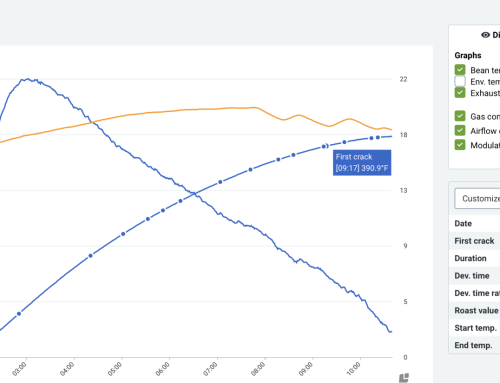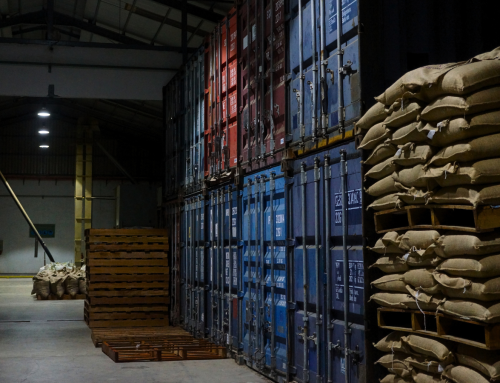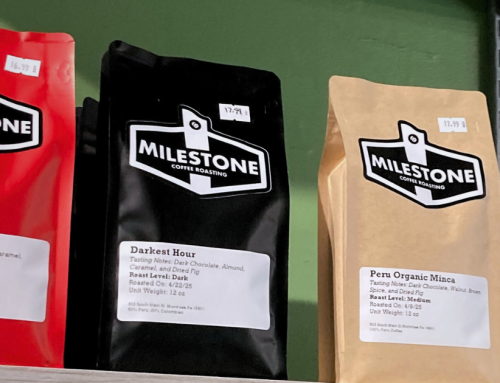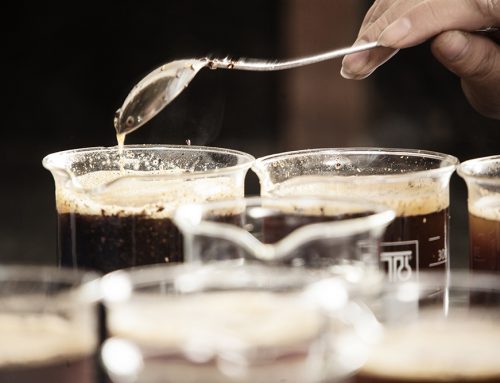Costa Rica coffee is as advanced as it gets and there are no signs of it slowing down. Costa Rican coffee farmers are poised to take the industry even further down the pathway of experimentation and diversification. Today, Costa Rica’s coffee farmers are highly motivated to keep their country on the map. They are fighting to keep Costa Rica’s reputation for cutting edge coffee and innovation alive.
Costa Rica coffee producers are highly attuned to technical advancement. In particular, farmers and millers look for new trends in agriculture and coffee processing. Producers don’t hesitate to take a chance on new varieties and fermentation techniques. For coffee roasters, this makes sampling unroasted coffee from Costa Rica an adventure. The country is constantly trying to raise the bar on excellence. However, it wasn’t always easy for Costa Rica.

Costa Rica coffee being delivered to Beneficio San Diego by Oxcart
Costa Rica Coffee History
Few coffee-producing countries go the extra mile to protect their agricultural workforce like Costa Rica does. After a violent civil war in 1948, the newly formed Constitutional Assembly abolished the military. This move reallocated Costa Rica’s budget to medical care and education. As a consequence, the country has experienced a period of peace and prosperity that continues to this to this day.
Since the 1940s, Costa Ricans have had a universal healthcare system and a large budget dedicated to education. These factors have opened the path for higher education levels compared to most Latin American countries. These two factors are the basis for social equality and environmental conservation in Costa Rica.
Costa Rica’s quality socio-economic infrastructure contributes to the high cost of coffee. When coffee roasters buy Costa Rican green coffee, producers receive nearly 80% of the FOB value, guaranteed. Agriculture is heavily regulated with transparent minimum wages and sustainability practices. Additionally, the Instituto del Café de Costa Rica (ICAFE) goes to great lengths to ensure fair treatment along the supply chain.
Costa Rica is tiny — about a third of the size of Louisiana — yet 25% of the land is protected, and nearly 60% is reforested. Petroleum extraction and gold mining are banned here. The country also went from having one of the highest rates of deforestation in the 1970s to stopping and reversing deforestation.
As one of the happiest countries on Earth, it is no surprise that Costa Ricans value quality over quantity. This mindset is woven into the coffee value chain from the beginning. Costa Rica is the only country in the world to measure and buy coffee cherries in fanega, a unit of volume rather than weight. This encourages pickers to choose the ripest cherries because riper is bigger.

Costa Rican coffee is delivered to mills as cherry
Costa Rica Coffee Production
In the 1990s, Costa Rican coffee production peaked at 35 quintals per hectare (around 3,500 pounds). Since then, production fallen nearly 40%, and the number of farmers has decreased by almost 50%. Today, the country has around 27,000 coffee farmers remaining. Costs in Costa Rica are higher all around. There are high premiums for labor, production, and the country’s tourist trade causes inflation. On the positive side, the number of micro mills that dot the country has nearly doubled in the last decade. Innovation, differentiation, and quality improvements are absolutely central to Costa Rica’s coffee production today.
In the 2021/2022 harvest, Costa Rica experienced one of its lowest production volumes on record (~1.23 million bags) due to weather, plant diseases, and the pandemic. Although production rebounded nearly 15% in 2022/2023, numbers declined again in 2023/2024 with 1.18 million bags.
In its latest report, the USDA expressed concerns over the 2024/2025 citing, “exchange rate challenges, persistent labor shortages, and above average precipitation forecasts,”. In response to these conditions, farmers are more likely to reduce farm investments, initiating a snowball effect that could dampen growth in the coming years.
Although Costa Rica has lowered production volumes, the country’s brand recognition garnered over the decades has earned high international value for Costa Rican coffee. Demand for Costa Rican coffee has gone up, especially now that the supply is low. The price premiums are a strong motivating factor for producers.

Coffee drying on patios at Beneficio San Diego in Tarrrazu
Characteristics of Costa Rica Coffee Beans
Most of the coffee in Costa Rica is of the Caturra variety, but Typica, Catuai, Bourbon, Gesha, and Mundo Novo coffee varieties are common. Due to Costa Rica’s high cost of production, farmers see coffee disease, pests and fungus outbreaks a perilous. Volcafe Costa Rica, Genuine Origin’s sister company and sourcing partner in the region, sees the country’s staple Caturra variety fading from farms. In the long term the ubiquitous Caturra variety may be replaced by varieties that enable farmers to make their businesses more sustainable and productive.
Two of the varieties that may become more common are Laurina and Obata. The Laurina variety is a naturally low-caffeine variety that’s challenging to grow but offers an excellent Arabica cup profile. The Obata variety, a hybrid of Caturra and a variety native to Timor has a profile that is similar to Caturra but offers much better leaf-rust resistance and high yields.
The Pacific and Atlantic oceans influence Costa Rica’s terroir and help to differentiate the profiles that grow in the country’s eight producing regions. Costa Rica is divided into provinces, which are further divided into cantons and sub-divided into districts. Costa Rica’s coffee-producing regions are: the Central Valley; Tres Ríos; Turrialba, Brunca; Guanacaste; Los Santos; Orosi; and Western Valley. For an in-depth look at what goes on in Costa Rica’s coffee industry, learn more here.
With so much emphasis on diversification, it’s impossible to generalize what coffee from Costa Rica tastes like. For example, coffee from Tarrazú, the most famous coffee-producing region, and highest-producing canton, can be processed into honey, anaerobic, or lactic anaerobic microlots, each with their own unique flavor profile. Costa Rica green coffee’s rich diversity of flavors and characteristics is always exciting and ahead of the curve.

Processing coffee at the Montano Micro-Mill in Tarrazu
Genuine Origin in Costa Rica
Volcafe Costa Rica, Genuine Origin’s sister company, runs the most prominent private mill in the country – Beneficio San Diego. Since 1888, the mill has pioneered constant innovations to process coffee from the Tarrazú region, an area affectionately referred to as the country’s nursery for great coffee. Over 2,000 small producers entrust their coffee to the mill, which spares no effort to maintain the high quality of coffee cherries delivered to respect the work of the farmers. With three more wet mills to the north and south, plus a dry mill where all coffee is prepped for export, Volcafe Costa Rica has a strong presence throughout the country.
Beneficio San Diego recently acquired Montano Micro Mill. The plan is to take experimentation to the next level at Montano and push the language of coffee forward. Juan Ramon, a local producer with a strong reputation for high quality, leads Montano. Under his direction and with Volcafe support, Montano is set to become a high-powered lab where research into new processes can thrive.
We recently received our first coffee from Montano, a jaguar conservation lot that combines anaerobic and honey process green coffee beans. As Juan Ramon and Volcafe Costa Rica work on perfecting experimental processes at Montano, the knowledge can further be scaled up and implemented at Beneficio San Diego to add value to larger volumes of coffee.
Most of the farms we source from in Costa Rica participate in one or more certification programs. As the new European Union deforestation-free legislation (EUDR) deadline looms at the end of 2024, Volcafe Costa Rica is already way ahead of the curve. As noted above, Costa Rica took on deforestation long ago.
Coffee that we source from Costa Rica is fun and exciting. With so much variety, roasters can tour the country vicariously through the diversity of our catalog. There’s no shortage of options from this reputable coffee origin; coffee roasters can continue to look forward to both consistency and brand-new experiences in Genuine Origin’s Costa Rica portfolio.






